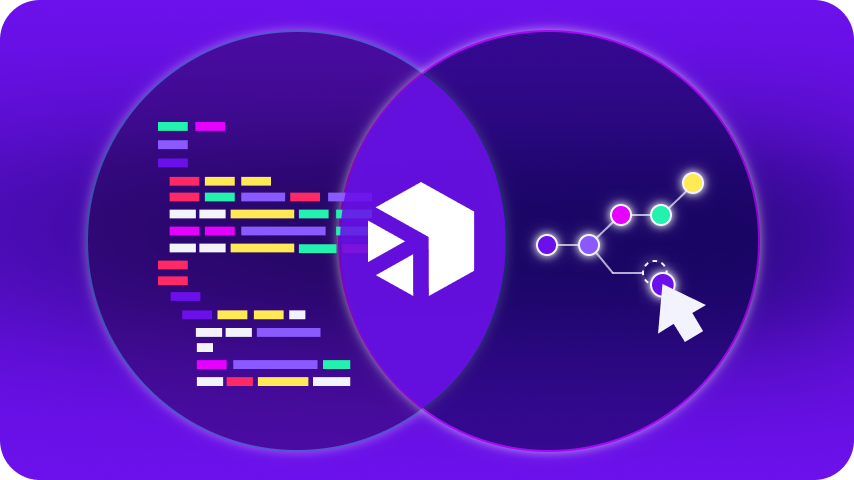November 30, 2022
A business’s need to build and maintain customer relationships far predates the cloud or the internet. It even predates the Rolodex or the phone. Harnessing the power of sales and marketing in a business is nothing new, yet in that role one must always be future-facing; strategizing to adapt to new tools to keep the customer happy and the business on track.
A growing number of enterprise IT professionals are recognizing the value of integration to their operations, but do the advantages of enterprise application integration really matter to the marketing department?
The short answer: Yes.

Balancing Customers, Relationships, and Management
With so many sales and marketing channels available now, a staggering amount of customer data is generated as users flow between them.
Customer relationship management systems (or CRMs) were perhaps the earliest technical solution to the challenge of keeping your customer data organized. With various levels of sophistication, they have been helping support sales since the 1990s, first as stand-alone software, then also becoming an available component within the ERP systems of the day. While this CRM integration into ERPs was a quantum leap forward in creating one holistic view of the many moving parts, there were still many limitations to relying on a software model.
Enterprise Integration: The Next Logical Step?
As far back as 2019, Forrester reported that “The enterprise resource planning (ERP) era is over.” Though the term ERP has tended to continue in usage, often being blended with EI as “ERP integration” or “ERP system integration”, the notion of an ERP as a single software omni-suite is quickly going the way of the CD-ROMs it was first distributed on.
In a digital-first world where marketing now needs to employ analytics, SEO, lead capture/generation/nurturing, event marketing, ecommerce, and an ever-changing roster of social media tools, it’s not surprising that Gartner analysts predict that more than 85% of organizations will embrace a cloud-first principle by 2025. As part of this trend, iPaaS for enterprise organizations are quickly coming to the attention of business leaders. By marrying the omnichannel approach of ERPs with the benefits of the cloud, enterprise integration provides flexibility without complexity.
3 Key Benefits of eiPaaS for Marketing
There are several advantages of enterprise application integration that directly address marketing department priorities and challenges.
1. iPaaS Plays Well With Others
Being platform-agnostic is one such example of how a good iPaaS can provide such flexible no-hassle support. It doesn’t get hung up on whether the many tools you are trying to integrate are Microservices, APIs, or cloud-based. They can just as easily be cutting-edge or legacy. If SAP ERP integration is vital to your team’s success, it can now be completed quickly and with minimal downtime. If your Social Media Manager finds themselves continuously switching between apps, an integration can bring focus and clarity to them while helping to deliver a consistent user experience to the customer.
An effective enterprise ecommerce integration strategy can deliver benefits to both business and customer simultaneously:
“By integrating order fulfillment, a purchase on the website can use inventory information availability across warehouses and retail locations to determine the optimal place (both for the customer and for the business) to ship from based on destination.”
Sayer Martin, Forbes Council Member
2. iPaaS’ Security Keeps a Secret
Though security may not be the first thing that comes to mind for marketing, stop and ask yourself what happens in the aftermath of a data breach:
- What happens to your customer confidence, and your bottom line?
- Who has to craft that message to try and regain trust? (And deal with all the negative customer feedback?)
Simply put, in a world where data breaches are routinely making headlines, moving to an enterprise iPaaS that offers 24/7 monitoring and unparalleled protection and security means less stress for your customer, which translates into less stress for you.
3. iPaaS Supports New Experiences
More so than any other department, marketing needs to be able to recognize and adapt to new trends. As part of this, you need the freedom to adopt the newest tools as soon as they become available. An iPaaS with a low-code approach allows new tools to be integrated quickly and with less time stuck waiting for your internal developers, and reusable components make managing all the business logic behind them simple.
“Marketing is a science. It relies on real-time data and accurate analytics to shed light on current performance–what’s working and what isn’t–while informing decisions that drive future improvements. This synchronous environment is only possible if all systems are connected.”
Cait Porte, CMO, Digibee
Implementation: Logical Steps & Common Missteps
71% of of respondents are actively planning to adopt, supplement, or replace their integration technology in 2023
Although there are clearly many benefits to a business, our recent State of Enterprise Integration Report found 71% of those polled are actively planning to adopt, supplement, or replace their integration technology in 2023.[1] While this is a majority, many businesses are ending up frustrated in their implementation efforts, reporting impediments that are the inverse of what an EI is meant to provide:
- 39% impeded innovation
- 42% ineffective practices
- 36% lack of agility
Innovation, inefficiency, and agility are imperative in order to meet marketing objectives.
98% of respondents in 2022 reported they had to rebuild their integrations within a year
The root cause of these negative impacts is often a piecemeal approach to the original integration strategy. The high-level advantages of enterprise application integration may be well understood by the internal tech team tasked to bring it to fruition, but without collaboration with the C-suite and product owners, they lack a depth of understanding of other roles and how they work. Where this happens it is easy to be left with a system that – while technically integrated – is in no way optimized for each individual team’s needs.
Compare these numbers to relevant numbers pulled from the 2022 SEI Report. Attempting to remediate this after the fact often results in a frustrating loop of building and fixing, with 98% of 2022 report respondents reporting they had to rebuild their integrations within a year.
Number of integrations that had to be rebuilt
1-5: 50%
6-10: 48%
10+: 1%
The impacts of getting caught in this loop can include potential downtime where data is unavailable during rebuilds and then having to re-learn a whole new ERP system integration every time.
Stop the Stop-Gap Solutions
Anyone leading a marketing department already understands how vital a well thought-out strategy is to the success of a project. This strategic lens positions a CMO as an incredibly valuable contributor to a successful EI implementation.
With the changing responsibilities of today’s CMO, the role has often expanded to encompass every aspect of the customer experience. Requiring so many different platforms to generate this customer data, a CMO is poised to be one of the best advocates for ensuring the integration brings benefit to both the business and the customer.
Remember the key elements a marketing team needs most: platform-agnostic, secure, and adaptable. The flexible solutions offered by Digibee are all three, meaning your ecommerce integration, CRM integration, and the integration of the many other tools your team relies on can be completed in weeks, not months.
Read the entire Digibee 2023 State of Enterprise Integration Report for more insightful information on creating a successful EI Strategy. Download your complimentary copy today.
[1] This blog post, originally published in November 2022, was updated to reflect data from the 2023 State of Enterprise Integration Report published in April, 2023.













